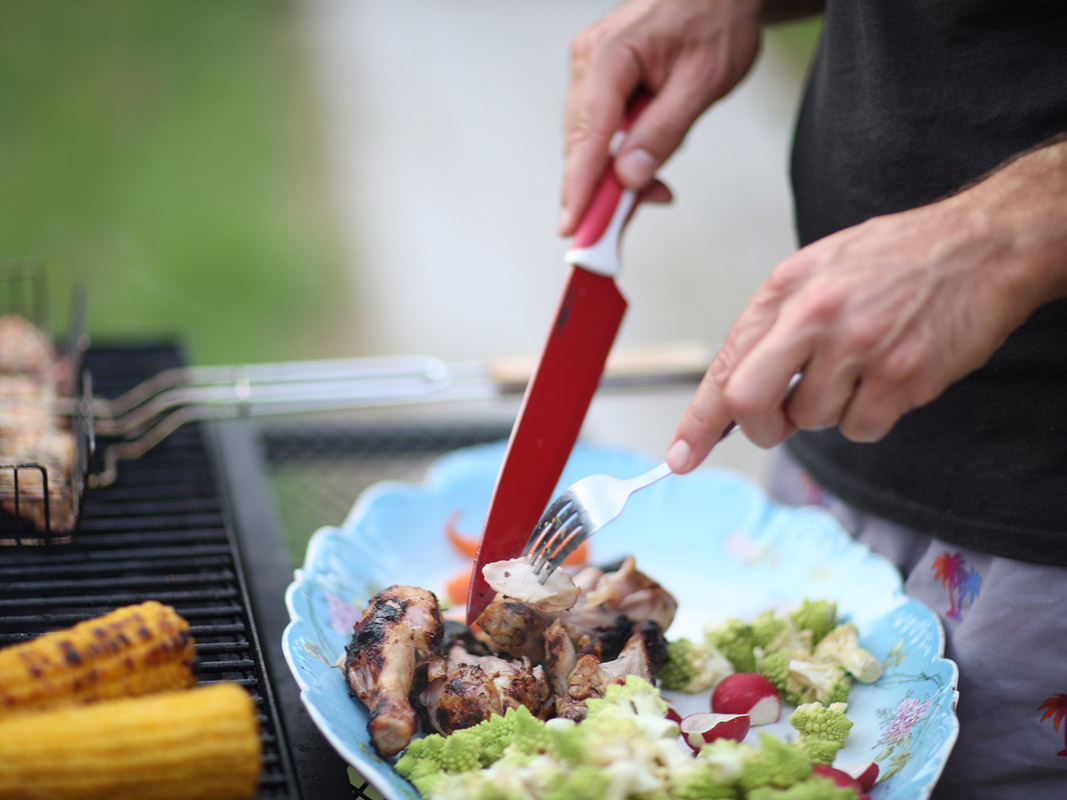Juiciness and tenderness are two very important factors when it comes to meat quality. Both factors are influenced by the cut of meat you choose and how long the meat is cooked. The more a muscle is used, the stronger, and therefore tougher, the cut of meat will be. And the longer meat is cooked, the more liquid it loses and the tougher it becomes. Factors that also influence tenderness and juiciness are: The animal’s age at slaughter, the amount of fat and collagen (connective tissue) contained in particular cuts, and, to a small degree, brining.
Collagen
Collagen is a long, stiff protein that is the most prevalent protein in mammals. It’s made up of three separate molecules composed of amino acid chains, twisted around each other, something like the way fibres are twisted around each other to form a rope. This structure is what makes the collagen so strong; this strength is also what makes it more difficult to break down. The more collagen there is in a piece of meat, the tougher it is to cut and to chew. Skin is mostly collagen, as are the tendons that connect muscles to bones. For cuts that are high in collagen, cooking with methods that use slow, moist heat, such as stewing or braising, are the best. Collagen is soluble in water and when it is cooked slowly with moist heat, it becomes gelatin. You can also make collagen less tough by slicing up meat into smaller pieces, which makes the fibres smaller and easier to break apart.
Weight-bearing muscles and muscles that are constantly used contain higher amounts of collagen than muscles that aren’t used for support or aren’t used as frequently. Lambs and goats, for example, have higher amounts of collagen in the legs, chest, and rump. Lamb is generally more tender than goats because lambs are usually slaughtered at a younger age than goats, and so their muscles are less developed and have less collagen than do those of goats.
Fish muscles are quite different from those in mammals. Fish float in water and so don’t need muscle to support their weight. Their muscle fibres are very short and are held together by connective tissue called myocammata, which is much more delicate than collagen and breaks down much more easily when cooked. The only muscles that most fish use extensively are around the tail and fins (areas that aren’t eaten as often by us), which are used for constant cruising around in the water.
Fat
Fat is a source of energy that is stored in muscle tissue. When fat is heated, it melts and lubricates the muscle fibres in the meat, helping to keep it moist.
The cuts of meat from that contain the most fat are those that come from areas where the muscles aren’t used as extensively, such as the ribs. The fat in fish is contained in the oil that is present throughout the body, so most of the fish has an inherent “lubrication” source.
However, in case you forget about these reasons which make meat juicy and tender, just remember, if it’s from Licious, it is bound to be juicy and tender!

